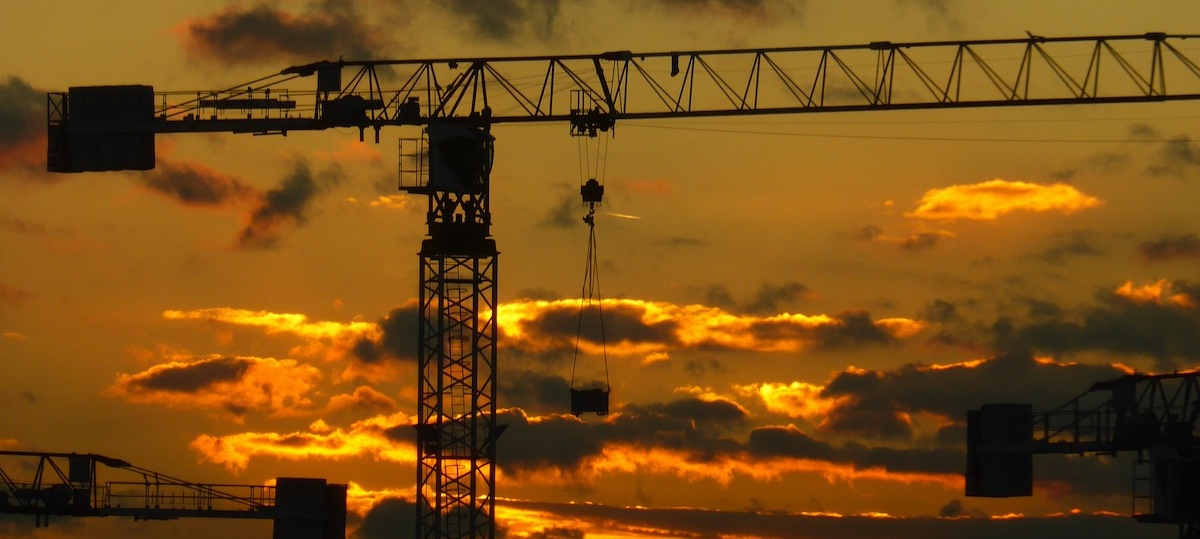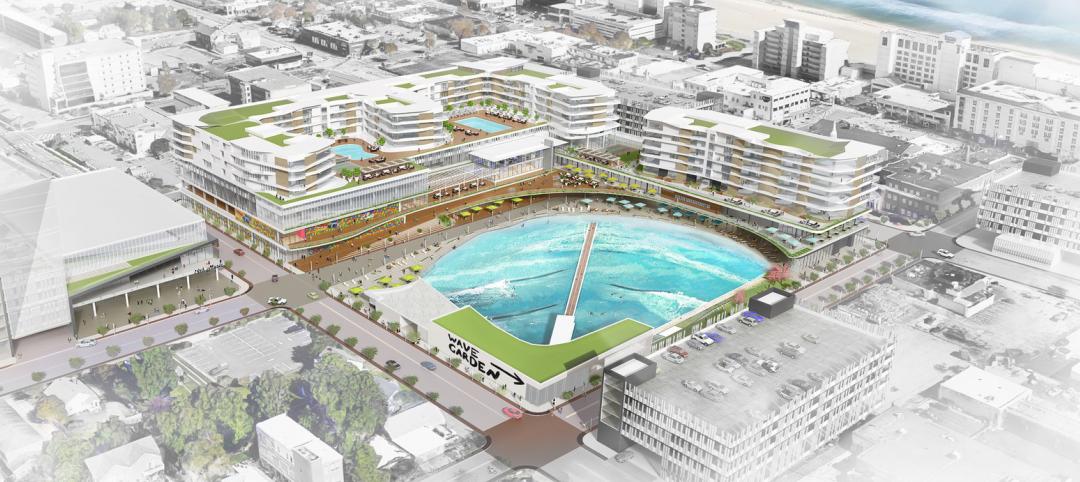Today's Census Bureau release regarding nonresidential construction spending did not just offer good news about April, it also supplied upwardly revised spending data for both February and March.
Nonresidential spending expanded 3.2% on a monthly basis in April, and spending totaled $646.7 billion on a seasonally adjusted, annualized basis, according to the government's initial estimate. Nonresidential construction is up by a solid 8.8% over the past year, consistent with ABC's forecast of high single-digit growth.
The Census Bureau also revised March's nonresidential spending figure from $611.8 billion to $626.7 billion, and February's figure from $613.1 billion to $618.4 billion. Initial estimates suggested that nonresidential construction was sagging during the early months of the year; however, the new data indicate spending has expanded during each of the previous three months.
"There is a considerable amount of financial capital available to move construction projects forward and low interest rates certainly help. While the availability of substantial financial capital may eventually produce over-built private construction markets, for now the expectation is that progress will continue." —Anirban Basu, ABC Chief Economist
"The upbeat assessment of nonresidential construction in April has been rendered more meaningful by the upward revisions for prior months," said ABC Chief Economist Anirban Basu. "The presumption had been that nonresidential spending construction data would improve as we approached the summer, and the outlook ahead remains solid.
"There is a considerable amount of financial capital available to move construction projects forward and low interest rates certainly help," added Basu. "While the availability of substantial financial capital may eventually produce over-built private construction markets, for now the expectation is that progress will continue."
All but one nonresidential construction sector experienced spending increases in April:
• Manufacturing-related construction spending expanded 2.6% in April and is up a whopping 52.9% on a yearly basis.
• Office-related construction spending expanded 3.7% in April and is up 8.8% compared to the same time one year ago.
• Construction spending in the transportation category grew 1.6% on a monthly basis and has expanded 11.6% on an annual basis.
• Lodging-related construction spending was up 5.5% on a monthly basis and 17.6% on a year-over-year basis.
• Health care-related construction spending expanded 2.1% for the month and is up 2.6% compared to the same time last year.
• Spending in the water supply category expanded 0.7% from March and is up 0.8% on an annual basis.
• Public safety-related construction spending gained 2.3% on a monthly basis, but is down 5.6% on a year-over-year basis.
• Commercial construction spending expanded 2.7% in April and is up 17.5% on a year-over-year basis.
• Religious spending gained 3.3% for the month, but is down 7.8% compared to the same time last year.
• Sewage and waste disposal-related construction spending gained 0.5% for the month and has grown 14.9% on a 12-month basis.
• Power-related construction spending grew 2.5% for the month, but is 11.3% lower than the same time one year ago.
• Highway and street-related construction spending expanded 8.5% in April and is up 4.8% compared to the same time last year.<
• Conservation and development-related construction spending grew 3.7% for the month and is up 17.2% on a yearly basis.
• Amusement and recreation-related construction spending improved 2.5% on a monthly basis and is up 23.3% from the same time last year.
• Education-related construction spending gained 3.2% for the month and is up 0.4% on a year-over-year basis.
Spending declined in only one nonresidential construction subsector in April:
• Communication-related construction spending fell 5.9% for the month and is down 5.5% for the year.
To view the previous spending report, click here.
Related Stories
Architects | Jan 25, 2018
Four keys to designing autistic-friendly spaces
Autism, in part, gave us modern architecture, writes PDR’s Julie Troung.
Sports and Recreational Facilities | Jan 25, 2018
Virginia Beach: A surf town with a wave problem no more
A world-class surf park will highlight Virginia Beach’s new live-work-play development.
Multifamily Housing | Jan 24, 2018
Apartment rent rates jump 2.5% in 2017, led by small and mid-sized markets
The average price for one-bedroom units increased the most.
Architects | Jan 24, 2018
Danish design firm Schmidt Hammer Lassen Architects joins Perkins+Will
Partnership expands Schmidt Hammer Lassen’s capacity for international growth; complements Perkins+Will’s design philosophy and strengthens the firm’s cultural practice.
Hotel Facilities | Jan 24, 2018
U.S. hotel markets with the largest construction pipelines
Dallas, Houston, and New York lead the way, with more than 460 hotel projects in the works.
Architects | Jan 24, 2018
Strong finish for architecture billings in 2017
The Architecture Billings Index concluded the year in positive terrain, with the December reading capping off three straight months of growth in design billings.
Architects | Jan 19, 2018
CTBUH announces global finalist projects for annual awards program
The Lotte World Tower, in Seoul, and 150 N. Riverside, in Chicago, are among the finalists.
Architects | Jan 10, 2018
NELSON and FRCH Design Worldwide are merging
Their chief executives will manage the company jointly, by region.
Architects | Jan 10, 2018
7 steps to ending a low growth cycle
Here are the top 10 marketing techniques as rated by high-growth firms and how they compare to their no-growth counterparts.
















